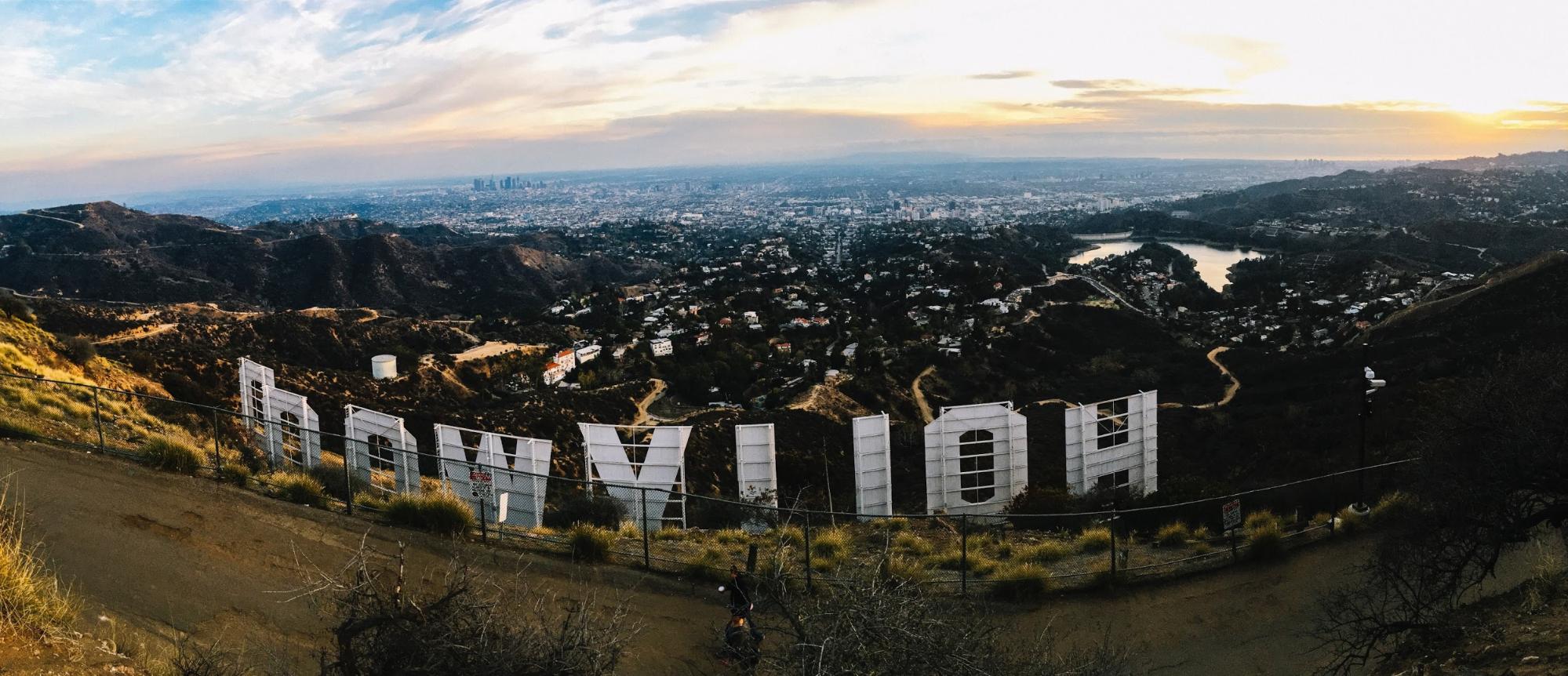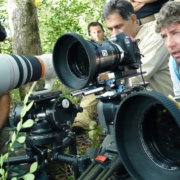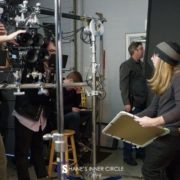Budget Breakdowns – Tough Questions to Ask Yourself
Budgeting for your latest project can prove to be a tricky business. It’s a process where you are forced to face some tough questions. You must try to find a happy medium between quality and cost-effectiveness. You’ll hear terms like Above-the-Line, Below-the-Line, and Line Items, so it helps to have a healthy understanding of terminology and the overall process. It’s important to create a budget that is realistic to what the cost of the film will entail when it’s all said and done. Believe me when I say your film’s financiers aren’t going to want you to stray too far from your original projection, so be careful – and again, be realistic.
 We’re going to take you through a few tips and tricks as well as cautionary measures to ensure your budget is air-tight. For most film budgets, they want to make sure all the costs of pre-production to post-production are covered, so the budget breakdown will break line items down specifically to prep, shoot, and wrap.
We’re going to take you through a few tips and tricks as well as cautionary measures to ensure your budget is air-tight. For most film budgets, they want to make sure all the costs of pre-production to post-production are covered, so the budget breakdown will break line items down specifically to prep, shoot, and wrap.
WHAT ARE ABOVE-THE-LINE AND BELOW-THE-LINE?
First off, let’s clear up this business about Above-the-Line and Below-the-Line. These terms come from the top sheet which at first glance details information in this fashion. Above-the-Line is the part of a budget that lists the salaries for those who have creative dominion of the project, like screenwriters, the director, producers, and actors. These are costs that are determined separately from production costs.  Below-the-Line is a list of costs that list and specify salaries for anyone that is not in the Above-the-Line budget. This includes the Assistant Director, Art Director, DoP, Gaffer, Best Boy Grip, truck driver, etc. This also includes the salaries of the non-starring talent, use of film studio, equipment, rentals, travel, lodging, etc. Unlike the Above-the-Line, the Below-the-Line budget is usually unchanging.
Below-the-Line is a list of costs that list and specify salaries for anyone that is not in the Above-the-Line budget. This includes the Assistant Director, Art Director, DoP, Gaffer, Best Boy Grip, truck driver, etc. This also includes the salaries of the non-starring talent, use of film studio, equipment, rentals, travel, lodging, etc. Unlike the Above-the-Line, the Below-the-Line budget is usually unchanging.
WHAT’S THE BEST WAY TO BEGIN?
Production budgets can differ greatly pending on variables like the size of production, length of the timeline, and amount of star power. It’s important right away to have a good understanding of what the project is and tailor your budget to fit snugly within it.
Just like we previously talked about in Breaking Down the Production Department, the production manager will break down the script page by page with the Assistant Director and producers. They determine the number of pages to be shot per day. Meaning, if this is a micro-budget Indie, it could be somewhere around 8 pages/day. By comparison, that’s 4-5 pages for Hollywood Indies and 1 page for major Hollywood films.

When digesting the number of pages for each day, also remember to break the scenes down carefully. Is there a lot of action or more dialogue? This matters. More dialogue means you can typically accomplish more material quicker than a page full of action. You must also look into the possible nuances of each scene. Does the screenwriter write what is happening in a detailed way? Or, is the action very simple, like: “Sam drove down the street, fleeing his assailants.” For a lot of action, you can scale back and for little action, like the above example, you can add more in page length to accommodate for the duration of the scene. Overall, experience in the industry or a background working with scripts gives way to a more accurate Guesstimation.
HOW DO I CALCULATE TALENT & EXTRAS?
We really begin digging into our budget with the talent. We’re just going to focus on Below-the-Line talent here. This is where we figure out who’s on set for what amount of time by referring back to the schedule we previously prepared. I use “schedule” loosely as it can still be coming into form at this stage. We also calculate the talents’ salaries by the number of their shooting days divided by the number of pages completed per day, then multiply by their day rate. There’s also a correction factor of usually about 2 you would multiply by. That way you have a nice, conservative number to wiggle with.
When adding Extras, it’s best to keep things as simple as possible. If you have 15 Extras for 1 day, that’s 15 Extra days. Listing it this way on your breakdown registers to ensure every Extra’s salary is accounted for. When you calculate the number of Extras you need when going through the script, you’re usually left with one lump sum. Then, to determine the cost, you simply multiply by their day rate.
WHAT ABOUT CREW, EQUIPMENT & SPECIAL EFFECTS?
It’s not too difficult to break down the script and determine the size of your crew. Typically, to figure out the number of days you’ll pay, divide the number of pages in the script by the number of pages your filming each day. That gives you a number to then multiply day rates by.
If you’re paying workers a flat rate, simply note that number in your budget. It’s also good practice to reach out to your Department Heads to find out what their needs are. The more in tune you are with them, the better your budget will be.
You may have crew members only for specific days rather than the entire production. This could be a special effect coordinator or a stunt driver or even a second camera unit for a special shot or scene. Just add them to the budget with the proposed amount of days and their rates. For special effects, stunts, and practical effects you want to get together with key members to figure out how each stunt and effect will be achieved. Develop an estimate for each factor of the puzzle.
With equipment and rentals, this is information you can learn from your various Department Heads and discuss with the Line Producer.
SHOULD I SKIMP ON INSURANCE? (Quick Answer: NO!)
Never underestimate the power of insurance. If you never had a previous accident, it can seem like a tough cost to pay. That said, if anything happens with equipment breaking, someone getting hurt, or anything from this, that, or whatever, that insurance cost is worth every penny. Also, many of us rent cameras and equipment, and for that, insurance is non-negotiable. So, do yourself a favor and always make sure you’re covered!
There are different types of insurance for general liability, production equipment, and for errors and omissions. Although, most Indie Filmmakers don’t worry about insurance for errors and omissions, assuming their films are generally original content or fan fiction that may not seek a profit. It’s important to know exactly what insurance you need, matching the capacity and size of production.
WHAT’S YOUR BURN RATE?
A burn rate is exactly how it sounds – it’s the amount of money you are spending per hour on your film. It’s important to know your burn rate so you have a strong command of how much your production costs. So, for every person late, or with a lunch delay, or any other variable, you can project how much you are losing per hour. As you can probably infer, you don’t want to obsess over every hour. It’s smart to have some wiggle room and you should realistically plan for variances of the sort.
So, how do we figure out your burn rate? It’s actually a pretty simple equation. You add up your total cost for production and divide it by the time unit (your length of production), and Voila! You have your burn rate.
Let’s say you’re working with a $50,000 budget and you’re scheduling 20 days for production. So, now you know you will be roughly working with $2,500/day. For a 12-hour day, that’s $208/hour. If you divide by 60, you can figure you’re spending somewhere around $3.50 per minute. So, you can break your spending down to any reasonable unit.
INDULGE YOUR FILM’S LIFESPAN!
It’s important to understand the life of your film after it’s created. This is where the distribution, marketing, and selling of your film matters. Some filmmakers invest in the making of their film but afterward, they may send it to a few film festivals, and then that’s a wrap. Since they invested every dollar solely into their film, that’s all they can afford. Believe in your film and remember to invest in it. Putting money into a film after it’s made is often times like breathing a spark into flames.
There are a lot of factors at work. Just like when creating a flame the wind or moisture or any other number of variables might put that flame out. But, it also might spark and create a huge fire. Investing into your project’s future is the same as breathing life into it.
Make sure you figure in the costs for your Film Financial Projections. This way, you can figure costs for marketing, publicity, film festivals (that you should research carefully first), and other additional costs like travel, lodging, meals, and so on. You can learn more about this stage of the budgeting process with FilmProposals where you can also find a Financial Projections Template.

Now, that we have dissected some of the key features when breaking down your screenplay, hopefully now you can wrap your head around budgeting. That said, let’s make it even a little easier for you. StudioBinder has an application that assists with budgeting. Indulge yourself by taking advantage of this amazing feature!
If you’ve got some extra cash and want to go through a third party like Film Budget Pro, you can avoid the painstaking work yourself and hire a professional to complete your budget for you. Services like Film Budget Pro not only offer detailed budgets, but they can also create detailed schedules and tax incentive analyses for filmmakers.













Your post helps me a lot as a independent filmmaker. Hope you have a more blog posts about how to make a budget.